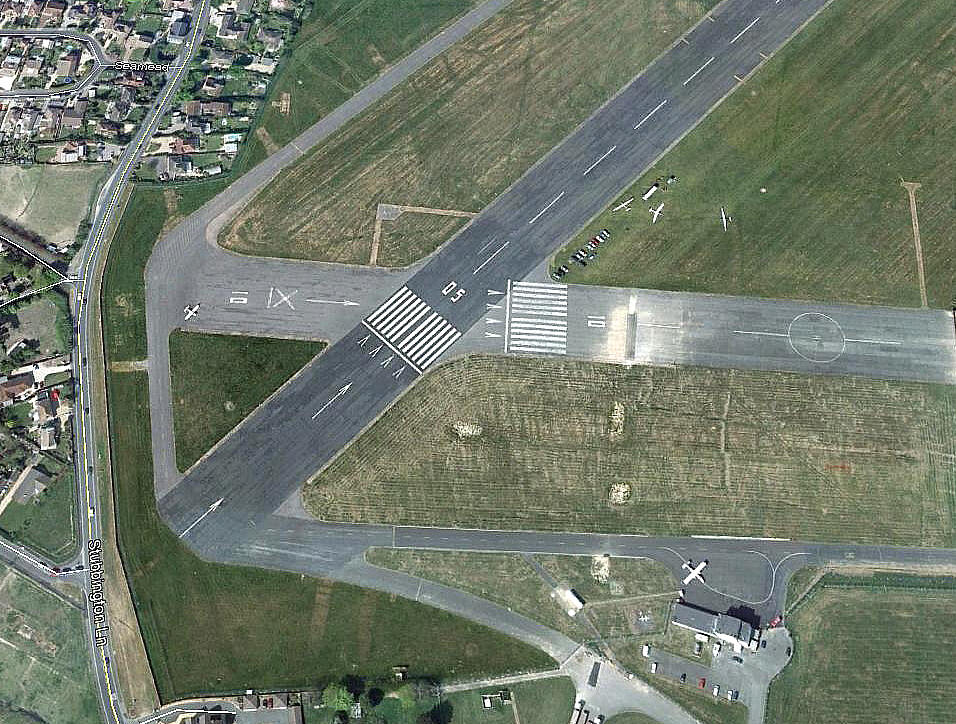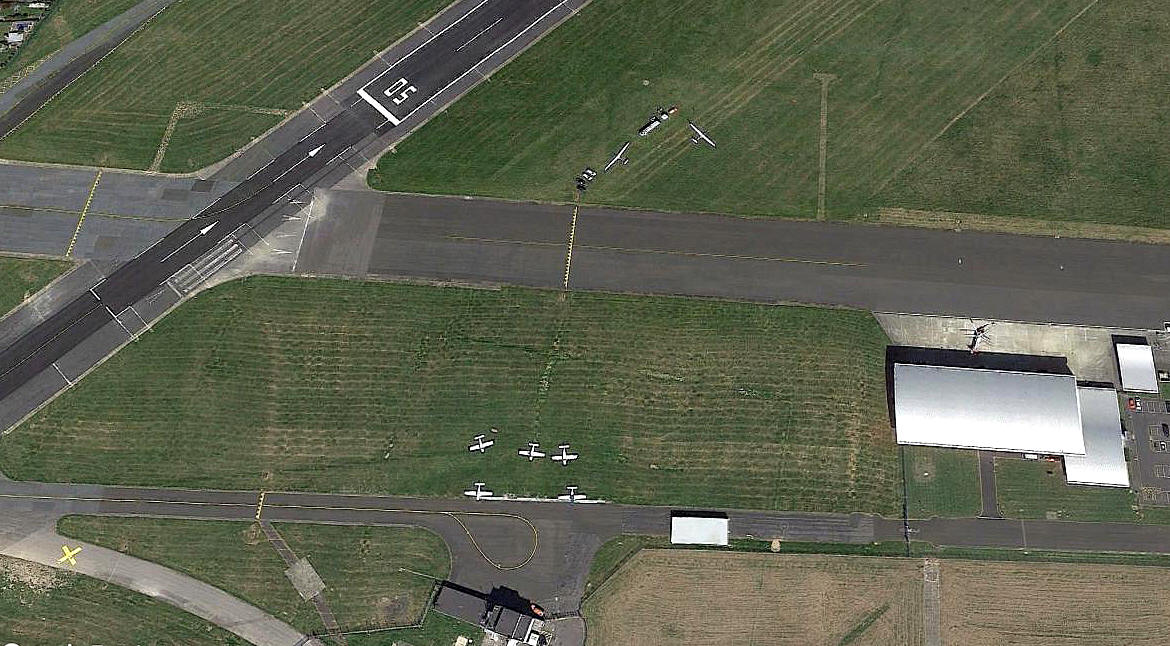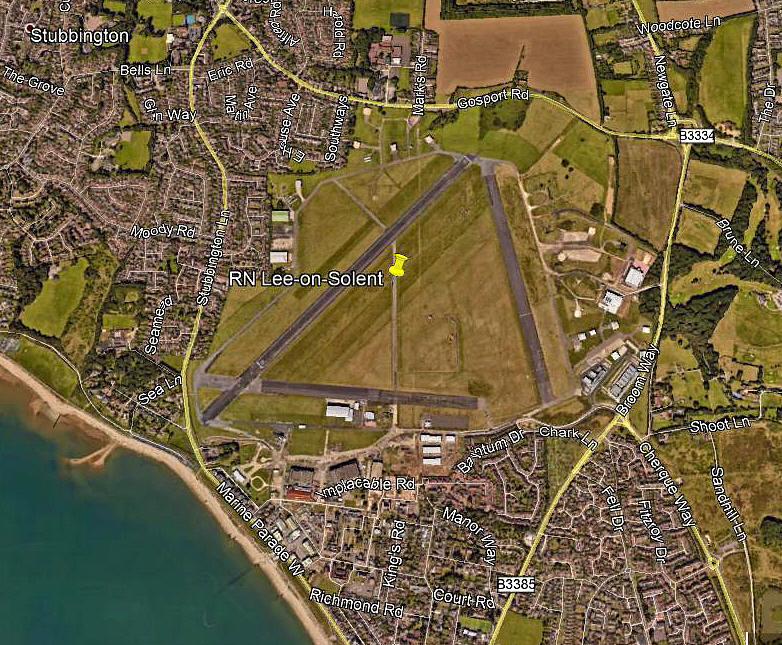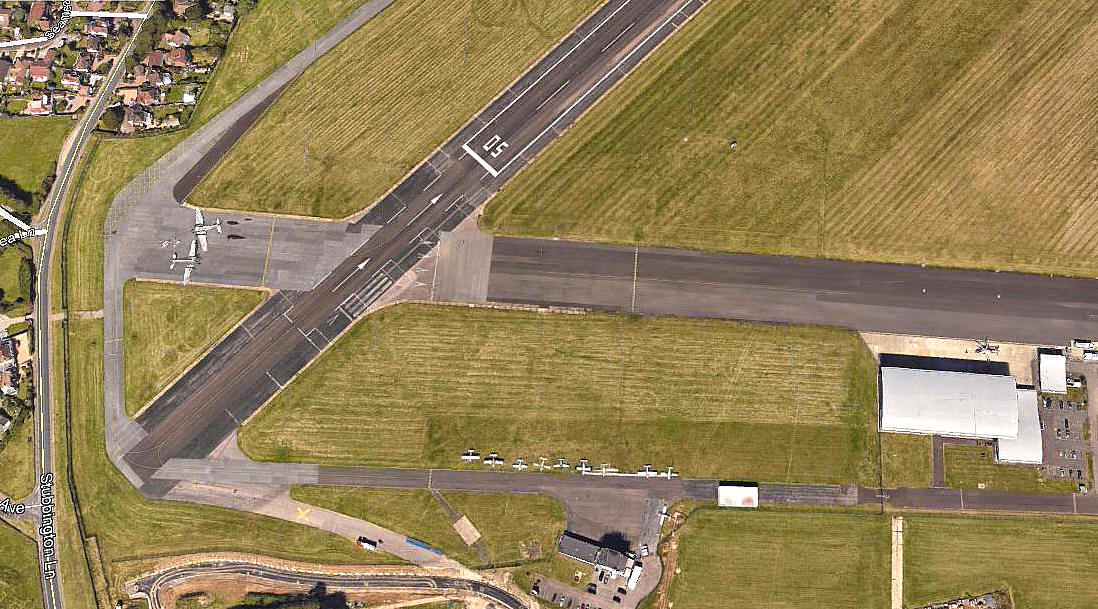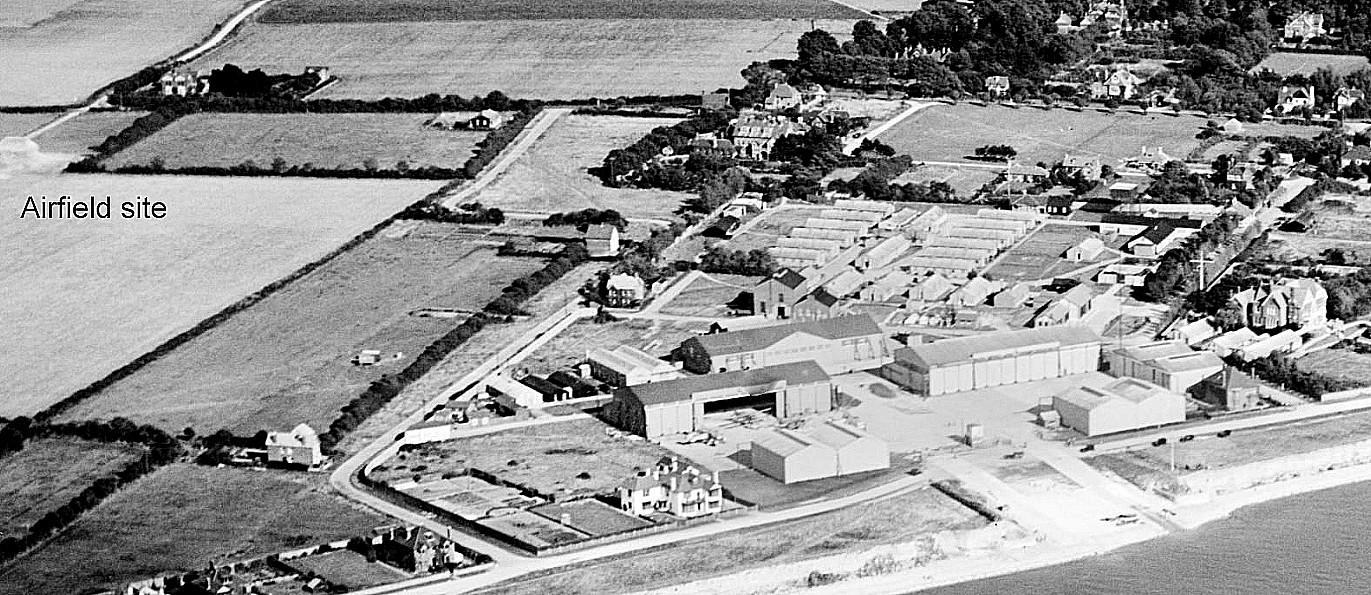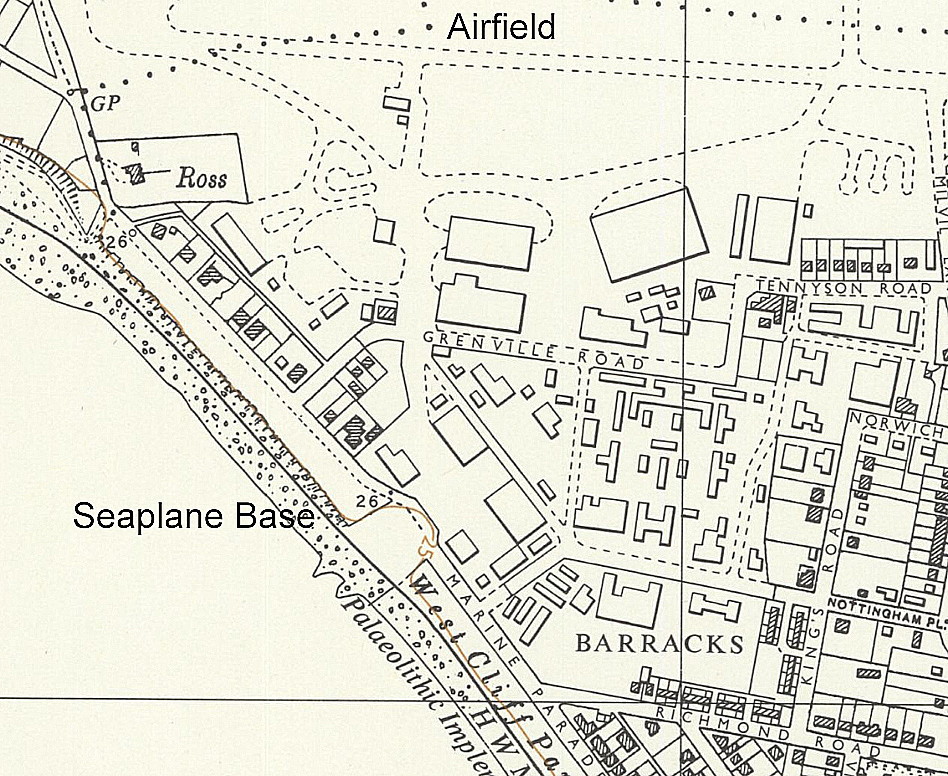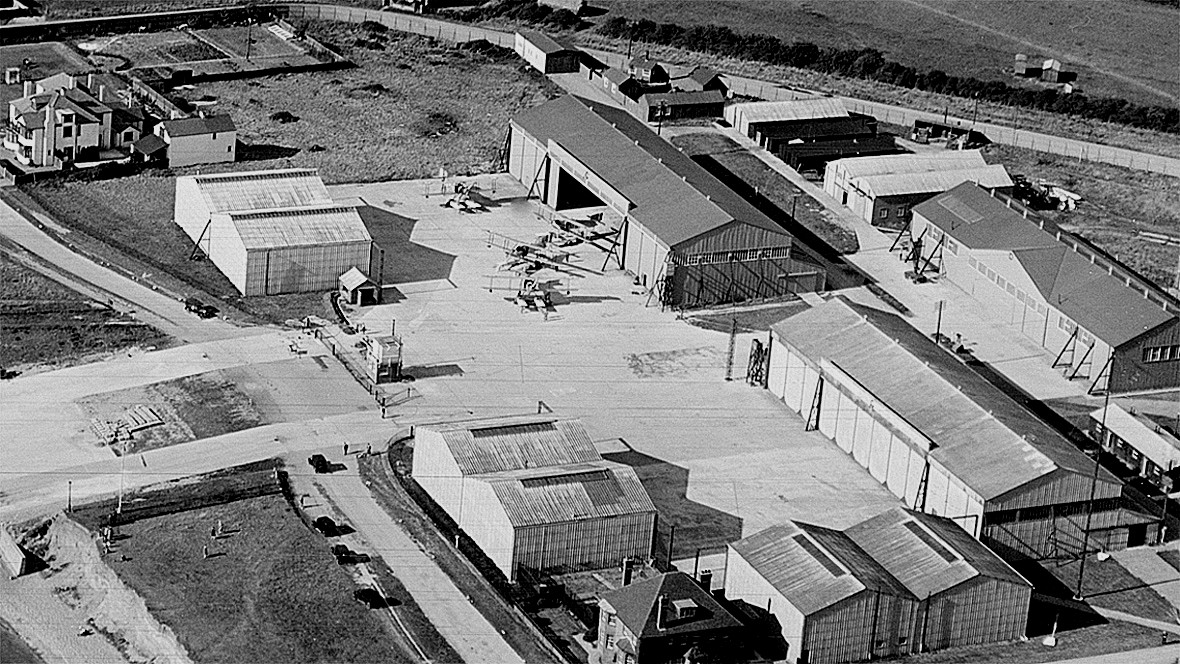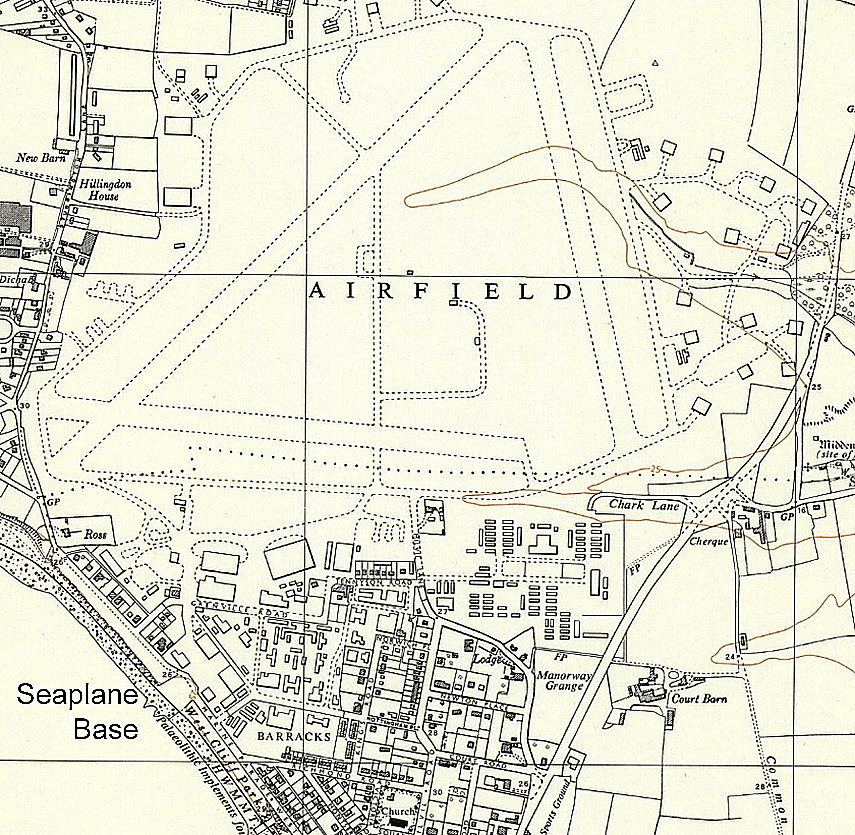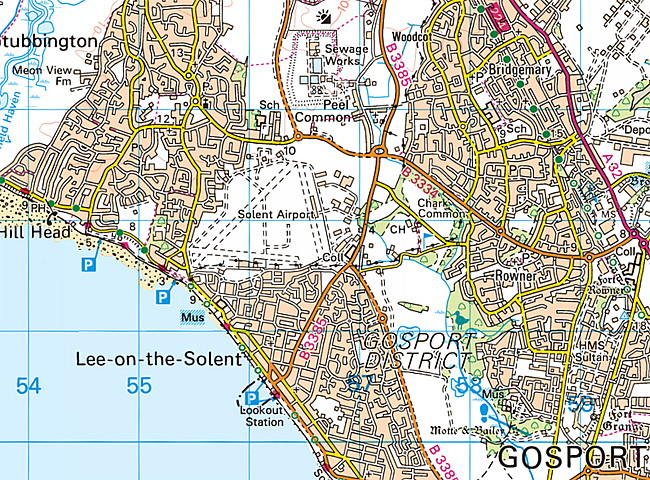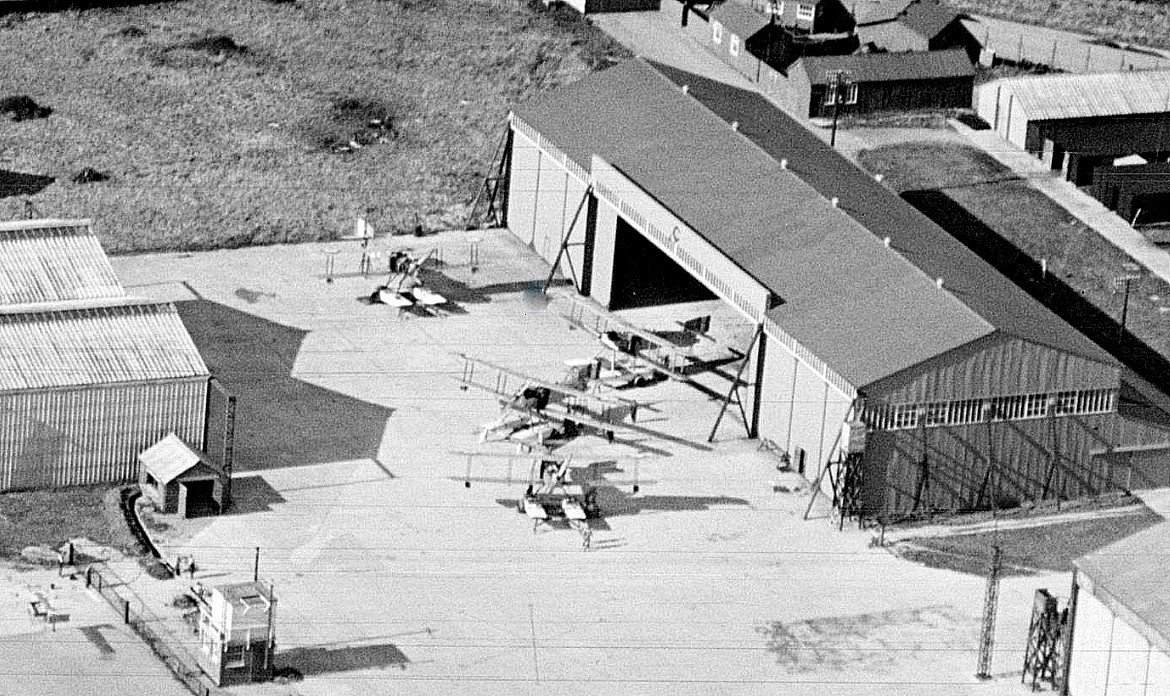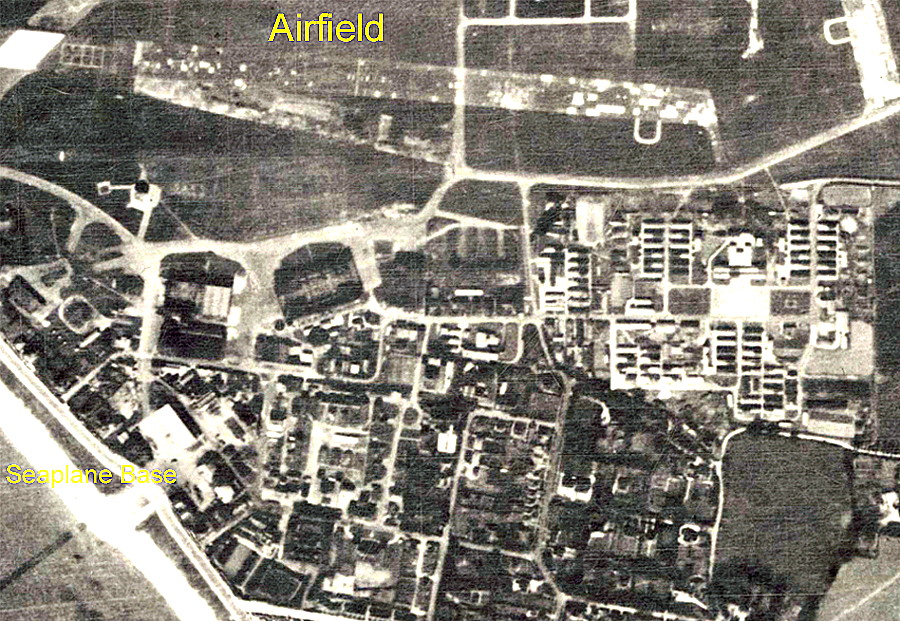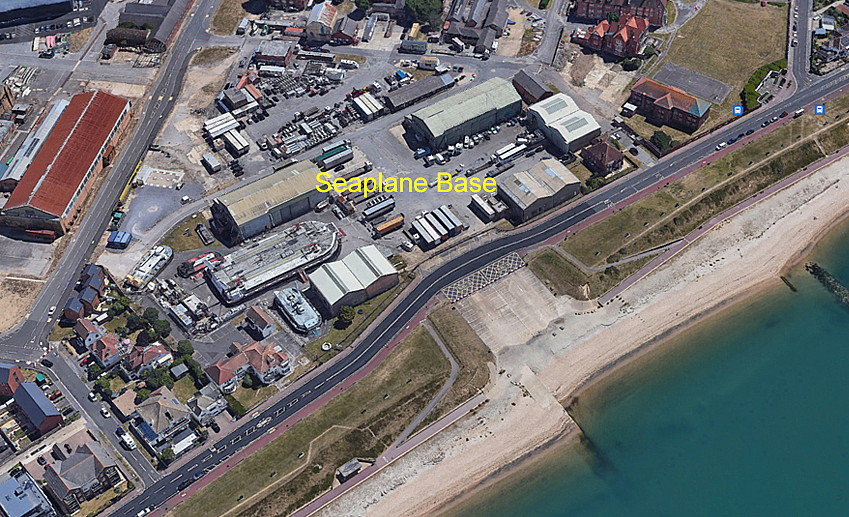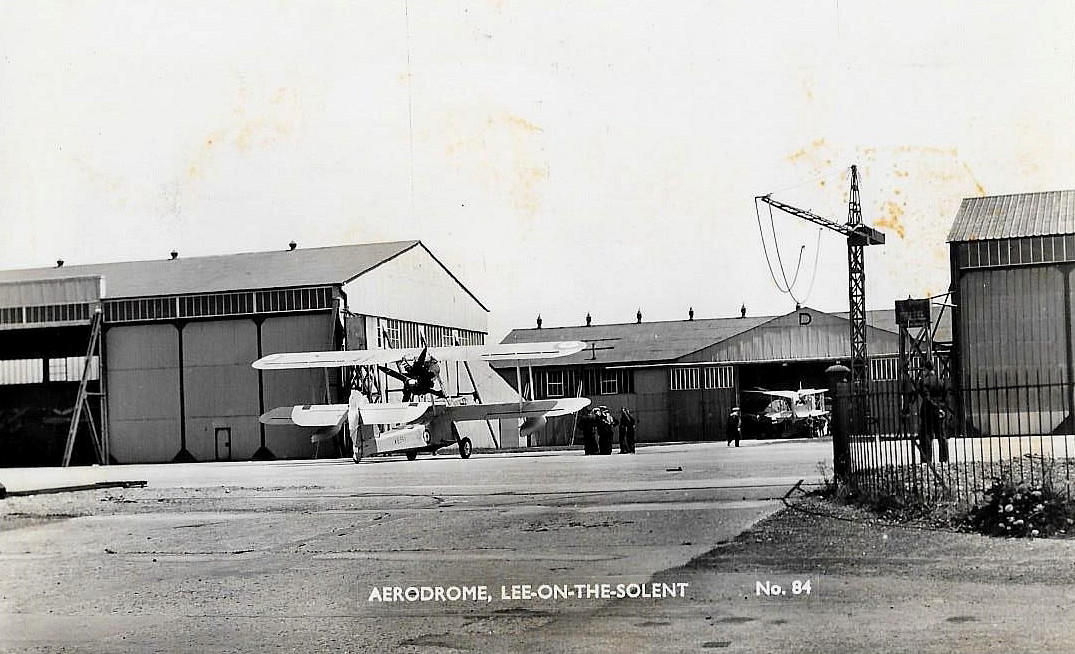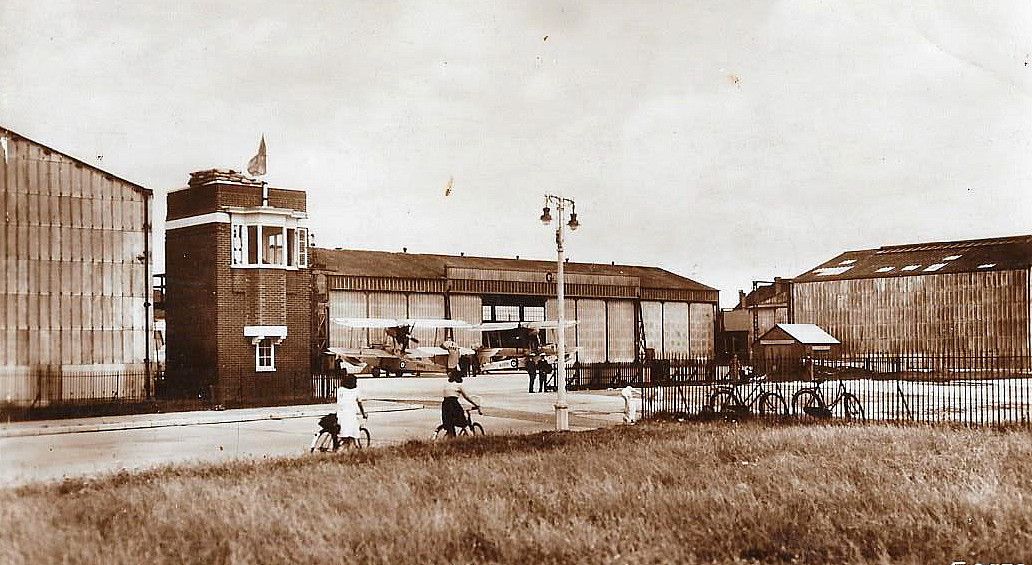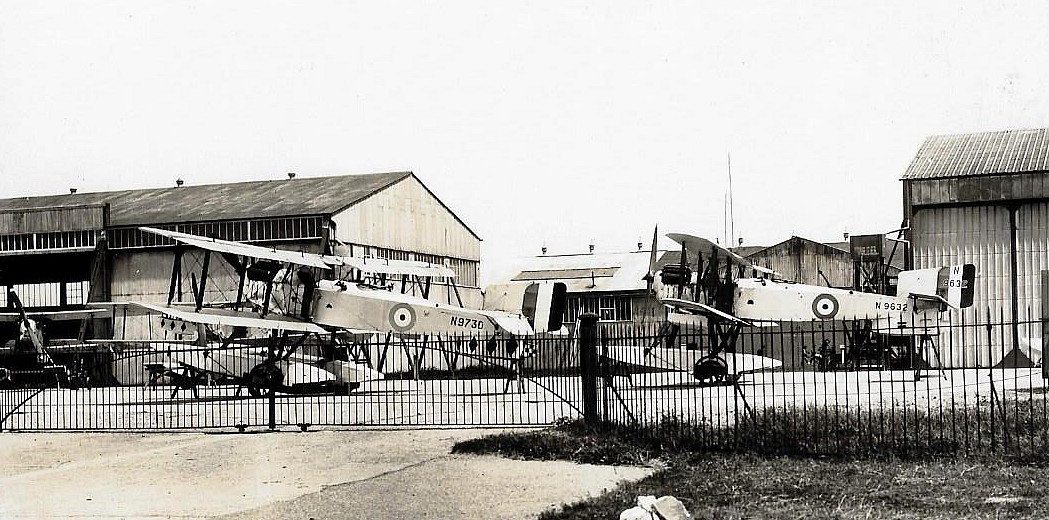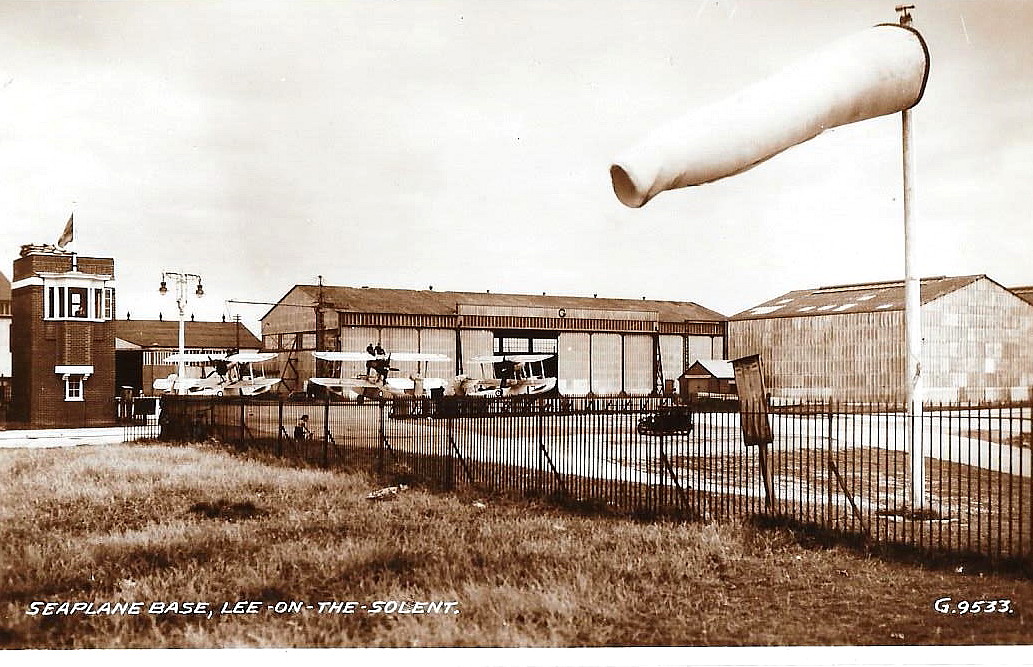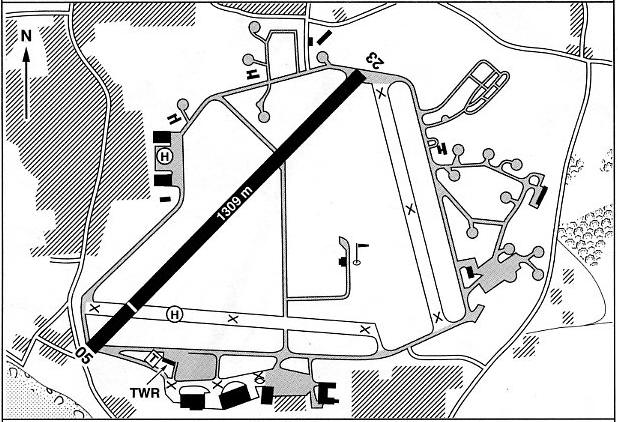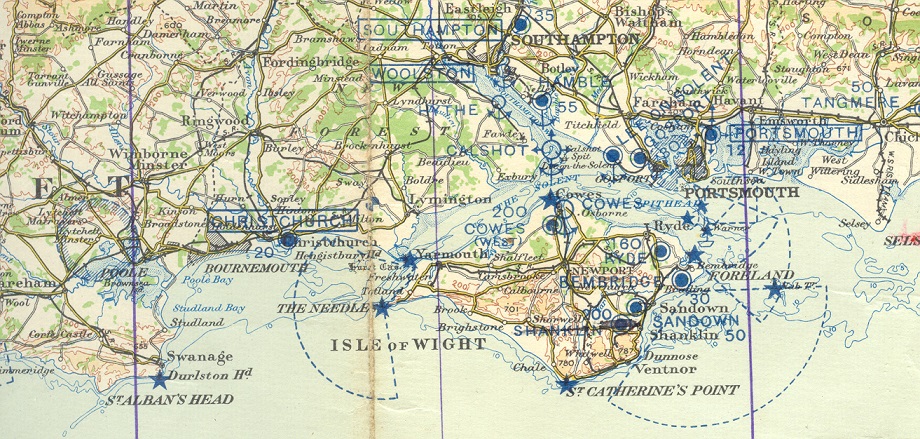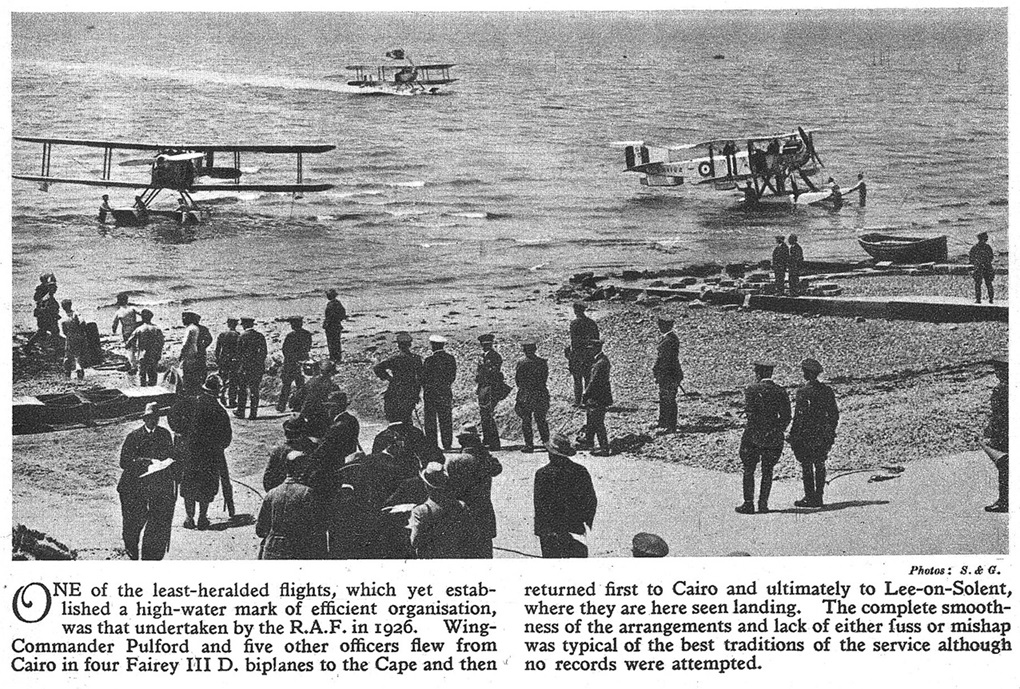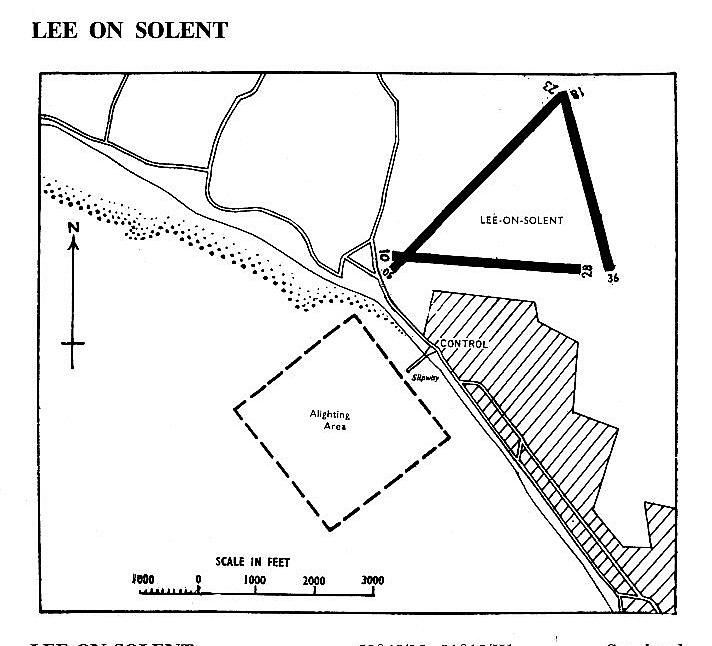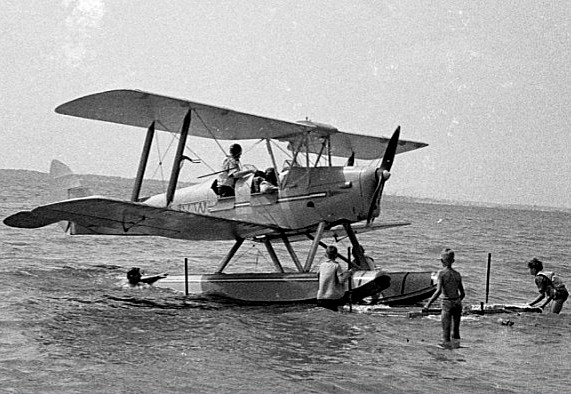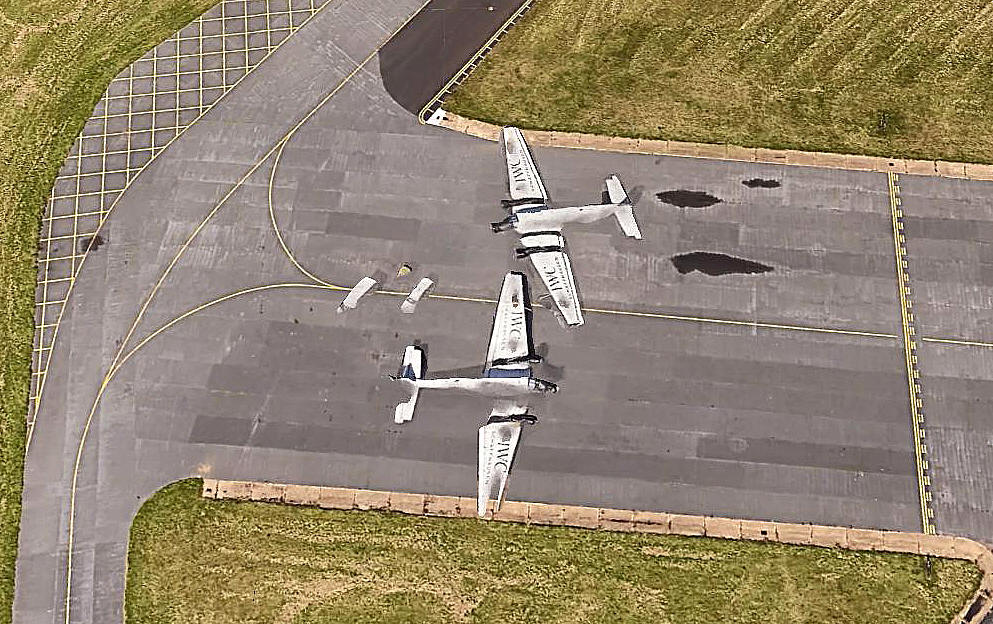Lee-on-Solent
LEE-on-SOLENT: Military aerodrome and co-located seaplane station. The land side has been a Royal Naval Air Station (Books of HMS DAEDALUS)
Note: These four pictures were obtained from Google Earth ©
There has been a lot going on here in recent years and it is well worth looking up.
Since the late 1970s?: GA use plus gliding
From 2006 apparently known as MCA Daedalus (MCA = Maritime & Coastguard Agency) Aka Daedalus Airfield
Military users: WW1: Seaplane Station (Sub-station to CALSHOT)
RNAS/RAF Seaplane School and Training Depot Station 1917 to 1919
Care & Maintenance 1919 to 1920
A MICHAEL T HOLDER GALLERY
We have Mike Holder, who, along with Mike Charlton, is a great friend of this 'Guide', to thank for providing these pictures and maps. Not least for the three aerial photographs from 1928 when it was then operating as a HM Naval Seaplane Training School, before the aerodrome was constructed.
A MIKE CHARLTON GALLERY
Between the wars
Note: These pictures from postcards were kindly sent by Mike Charlton who has an amazing collection. www.aviationpostcard.co.uk
The first picture shows what I think is a Supermarine Walrus. The Walrus entered service in 1935 so presumably this picture was taken between 1935 and 1938?. The second picture shows two young ladies on their bicycles near the main apron, so clearly the Station wasn't yet on a 'war-footing'.
The third picture of two Fairey IIIDs (N9730 & N9632), is much trickier to date. This type, the Fairey III, was very long-lived in operational service. It first flew on 1918 and was finally retired in 1941 - two years into WW2! There were five variants, the 'A', 'B', 'C', 'D' and 'F'. However, a bit of research reveals that N9730 of 202 Squadron came to grief on 07/07/30 in Malta, when it collided with an RAF dinghy whilst taxying, killing the occupant of the dinghy. It therefore seems fair to say that this picture was certainly taken in the 1920s! If anybody can kindly elaborate on this, the advice will be most welcome.
Regarding the fourth picture I might well be 'barking up the wrong tree' but, from left to right the first two Walrus have what appears to be an exhaust system mounted above the wing, whereas the third doesn't. So, are the two on the left side the Walrus I variant? If so this would seem to date this picture between 1937 and 1939.
WW2: HQ Flag Officer NAS Fleet Air Arm
808(?) and 886 (OCU?) Squadrons (Blackburn Sharks)
Service Trials Unit
Post 1945: Royal Navy 781 Sqdn (Wessex)
Southampton UAS (Bulldogs)
AES (Hunters, Sea Hawks, Sea Kings, Wasps & Wessex)
Gliding: 1970s to -
Note: In 1957 at least, the Portsmouth Naval Gliding Club were operating here. Still here in 1981
Operated by: 2005 by the Hampshire Police Air Support Unit .
From 2006 the Maritime and Coastguard Agency. (Search & Rescue duties?)
2011: Britten-Norman
Location: W of B3385, S of B3334, 2nm WNW of Gosport, 4nm WNW of Portsmouth
Flying groups: Post 1945: Fleetlands Flying Association, The Seaplane Club
Flying school: 2005: Carill Aviation
Period of operation: Military: 1917 to 1990s Civil: 1990s to -
Note. This map is reproduced with the kind permission of Pooleys Flight Equipment Ltd. Copyright Robert Pooley 2014.
Runways: WW2: 17/35 892x46 hard 05/23 1298x46 hard
10/28 1006x46 hard
1990/2000: 05/23 1309x46 hard
NOTES: It was on the 12th August 1924 that the third King’s Cup Air Race was held here, (the first was from CROYDON in 1922), and just ten aircraft competed over the 950 mile course – in those days it was a two day event. The winner was Alan J Cobham flying the de Havilland DH.50 G-EBFN and he averaged 106.6mph. With the handicap system in place this certainly proved Cobham’s exceptional flying skills as the previous year a Siskin II fighter type (G-EBEU) won averaging 149mph. This was the only time the King’s Cup took place here.
AN AMAZING ACHIEVEMENT
On the 1st March 1926 Wing Commander C W H Pulford led a flight of four Fairey IIIDs to Cape Town and back via Cairo. They arrived back at LEE-on-SOLENT in late May, a distance of about 13,000 miles with no reported mechanical faults during the trip.
The picture was scanned from The Pageant of the Century published in the mid 1930s. Mr Ed Whitaker kindly loaned me his copy obtained from a car boot sale.
THE WW2 ERA
In early WW2 the Service Trials Unit had, for example, a Blackburn Skua on floats - (not a success), a Fairey Albacore and a Fairey Swordfish doing long-range and bombing trials. Another Swordfish and a Supermarine Walrus were testing ASV (Air Ship Visual), an early version of radar.
AN AIR RAID
In his book The Urge To Fly Don Robertson, at that time in WW2 a Royal Navy pilot, gives an account of a Stuka raid on this aerodrome: “The attack had been made in broad daylight by 90 Stukas which had bombed Gosport and the aerodrome at Lee, although they had been intended for Gosport only which was not in use as an aerodrome by the RAF. The Duty Pilot’s orders at Lee were to fire off coloured Verey lights in the event of an enemy attack or the sighting of parachutists, which, of course, he did. The Germans must have thought they were attacking the wrong target, turning their attention to Lee when they saw the lights. Gosport and the dockyards were heavily defended with anti-aircraft guns while Lee was fully exposed, virtually without defence. For fifteen minutes the Stukas, after dropping their bombs, flew around the perimeter squirting at anything worthwhile with their machine guns.”
Obviously a brilliant tactic by the home defences, and yet another ‘home goal’ scored. “Forty-five of the forty-seven aircraft dispersed on the aerodrome were either burnt out or riddled with bullets, the two main hangars had been burnt down and everything was in a shambles.” Yet again, as so often in this ‘Guide’ I need to pose the question: On whose side exactly, were those in charge actually on? Without much doubt so many of the tactics employed seemed purposefully designed to aid the Germans. Was this simply incompetence, (as invariably claimed today), or was it, in part at least, deliberate to some extent? Something that probably will never be adequately answered?
One thing that is for certain is that the propaganda exercise mounted since WW2, stating that; ‘We pulled together as a nation to resist the Nazi threat, is a shallow lie. So many did not support the war. This is not to say they were pro-Nazi, although many were. It was often the ‘Nimby’ attitude needless to say, but, so many people and families had been so sickened by WW1, and loss of life and injury they had suffered that they felt they couldn't suffer more. And, we need to remember today, that that horrendous conflict had only ended twenty years earlier, so for so many they were fairly recent memories.
The 'Nimby' attitude even sometimes extended to the upper regime of the Church of England. A regime that, since Victorian times at least, was devoted to supporting a Royal family who were, essentially, German! How’s that for a conflict of interests? They changed their name to 'Windsor' to try and hide their family roots.
SOME STATS
During late 1944 this was obviously a very major RN Fleet Air Arm base with at least 4779 RN personnel on station plus 942 WRNS.
Note: This map is reproduced with kind permission of Pooleys Flight Equipment. Copyright Robert Pooley 2014.
It is worthy of note that this seaplane operating area was officially licensed.
SEAPLANE FLYING AFTER WW2
In his excellent book Tiger Moth Stuart McKay tells us: “In 1960, Air Commodore Christopher Paul, Secretary General of the Air League, sought to renew his seaplane pilot’s license, but discovered to his dismay that the school nearest to his Hampshire home was in Norway. After meetings with interested parties, and the generous funding by industry, not to mention a Tiger Moth (G-AIVW - ex. T5370) donated free of charge by Norman Jones of Rollason Aircraft, The Seaplane Club began operations from Lee-on-Solent.” This appears to have been from 1963 until they moved to CASTLE WATER/RYE (SUSSEX) later in the 1960s.
G-AIVW was registered to The Seaplane Club Ltd from 08.08.63 until 19.10.67. So, the picture, taken in 1963, was at a time when The Seaplane Club had just started operating.
When on holiday in this area as a lad, I can recall seeing this Tiger Moth operating from the sea close to the shore. I realised it was unusual but probably had no idea it was then the only seaplane operating in the UK. As so often in aviation history things can change very quickly. Up to the end of WW2, and into the 1950s to some extent, there were large numbers of seaplanes and flying boats operating, mainly in military guises of course. Then, quite suddenly, not one.
OTHER NOTES
In 1981 the Short Sandringham VP-LVE (VH-BRC) was towed up the slip-way for temporary open storage. I expect this was the Sandringham I photographed when flying over CALSHOT in the early 1990s?
Looking at a 1930 Ordnance Survey Aviation Map I now wonder if LEE-on-SOLENT aerodrome and LEE-on-SOLENT seaplane base should now be regarded as two separate sites? Probably not I suppose as runway 05/23 nearly ended in the water.
When I started flying LEE-on-SOLENT was a difficult place to ascertain. Nothing much seemed to be happening there but they had ATC in place. On a flight to the Isle of Wight in about 1995 and flying over Portsmouth harbour, we spotted the QE.2 sailing into Southampton. So we asked LEE-on-SOLENT ATC for permission to 'invade' their airspace to take some pictures. This was immediately approved - no problem. It was at that point I started to realise how airborne communications should work. Talk to ATC, express your intentions in precise terms, and heh presto, they’ll invariably bend over backwards to help. I should explain that at that time there was a certain culture when being taught to fly light aircraft, that excursions into controlled aispace would not be welcomed - but I did learn to fly on the boundary of the HEATHROW zone.
GA AT LEE-on-SOLENT
It came as a bit of a surprise to know that in 1977 five GA aircraft were based here. The first being the Aeronca C.3 G-AEFT (still airworthy?). At the same time it appears the DH.82A Tiger Moth G-AFWI and the Auster J/IN Alpha were operated by the Portsmouth Naval Gliding Club, presumably doing aero-tows? Of perhaps slightly more interest the privately owned Auster J5/B G-AXMN and Auster J/IN Alpha G-AZIH were also based here but then again it has been a quite common occurrence to have privately owned civil light aircraft based at operational military airfields in the UK. As often as not, as might be expected of course, these have been owned by military people, but not always.
A QUERY
This picture was obtained from Google Earth. It appears to show, to some extent, two Junkers JU-52s. But what is this? Are they painted on boards? And what purpose were they serving? If anybody can kindly provide an explanation, this will be most welcome.
Tom Mix
This comment was written on: 2018-10-10 23:14:32Hello I've been told that rides on the two seat Spitfire are available at the Airfield is this correct ? I'm in the USA planning a visit to the UK to ride in a Spitfire I'm researching places in the UK to get this achieved . Thanks you for any info that you all might be able to provide . Sincerely Tom Mix
Reply from Dick Flute:
Hi Tom, I don't know about this. But I shall keep this posted. This said a flight in a two-seater Spitfire in England can be easily arranged. Best regards, Dick
We'd love to hear from you, so please scroll down to leave a comment!
Leave a comment ...
Copyright (c) UK Airfield Guide















